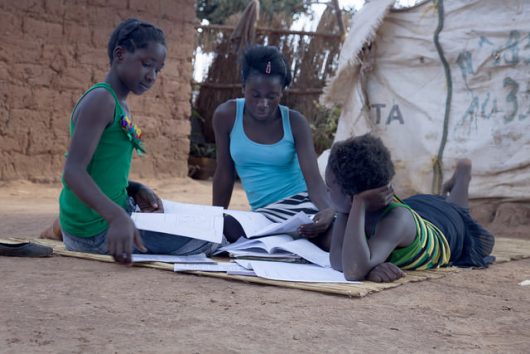Causes of Common Diseases in Botswana
 Botswana, located directly north of South Africa, has been victim to epidemics of deadly diseases such as HIV/AIDS, tuberculosis (TB) and malaria. Prevention and treatment of these diseases is a top priority for Botswana’s ministry of health. Since these diseases have high mortality rates, it is important to look at the root causes and risk factors associated with common diseases in Botswana.
Botswana, located directly north of South Africa, has been victim to epidemics of deadly diseases such as HIV/AIDS, tuberculosis (TB) and malaria. Prevention and treatment of these diseases is a top priority for Botswana’s ministry of health. Since these diseases have high mortality rates, it is important to look at the root causes and risk factors associated with common diseases in Botswana.
According to the Centers for Disease Control and Prevention (CDC), the deadliest common diseases in Botswana and the percent of deaths for which they are responsible are the following: HIV (32 percent), malaria (7 percent), tuberculosis (6 percent), diarrheal diseases (4 percent), cancer (4 percent), pre-term birth complications (2 percent), Ischemic Heart Disease (2 percent), stroke (2 percent) and STDs (2 percent).
The top three common diseases in Botswana — HIV, malaria and TB — are all communicable diseases, meaning that they are transmitted through contact. Communicable, maternal, neonatal and nutritional diseases comprise the deadliest category of diseases in Botswana. The next two categories of diseases with the highest mortality rates are non-communicable diseases and injuries, respectively. Cardiovascular diseases and cancer account for nearly half of deaths from non-communicable diseases. The top causes of deadly injuries in Botswana are self-harm and interpersonal violence, unintentional injuries and transport injuries, respectively.
Unsafe sex is the most prevalent risk factor for deadly diseases, accounting for about 60 percent of behavioral risk factors for contracting a deadly disease. It is by far the most common risk factor for HIV/AIDs and TB. Unsafe water, sanitation and handwashing habits account for 46.3 percent of environmental risk factors, followed by air pollution accounting for 37.1 percent of environmental risk factors. These are the most common risk factors for contracting diarrheal and infectious diseases. Alcohol and drug use is also a prevalent risk factor for contracting a deadly disease, such as HIV through needle sharing, or for certain injuries.
Several projects have been implemented for disease prevention and treatment, specifically for HIV as it causes almost one in three deaths in Botswana. Areas of focus for the national HIV program include high-quality prevention, care and treatment services; HIV counseling; blood safety and early infant diagnosis.
Evidence-based public health procedures are effecting change in Botswana for preventing HIV. The Botswana Combination Prevention Project evaluates the effect of proven HIV-prevention measures to reduce the number of new HIV infections over time.
Some procedures for prevention and treatment that have decreased the incidence of HIV cases. These include HIV testing, which positively changes behavior, prevention of mother-to-child transmission and antiretroviral treatment for those infected with HIV, which can cure the patient while also preventing the transmission of the disease to another partner.
Additionally, the CDC works to strengthen healthcare systems in order to sustain an effective HIV program. Strengthening healthcare systems includes improving workforce development, disease surveillance and epidemiology, health information systems and program monitoring.
As of 2012, 96 percent of men, women and children in Botswana in need of HIV treatment received it. The mother-to-child transmission rate of HIV has decreased to less than 4 percent. Botswana has integrated their TB and HIV programs, which improved the quality, impact and coverage of both programs.
Education for prevention and access to these services are very important. These steps for prevention and treatment, however, require resources that developing countries like Botswana do not have. This is where foreign aid strongly benefits a developing country. Through PEPFAR and the establishment of CDC Botswana, the U.S. government has had a significant impact in ameliorating common diseases in Botswana, specifically HIV. Foreign aid will continue to be a key component in tackling global health crises.
– Christiana Lano
Photo: Flickr
